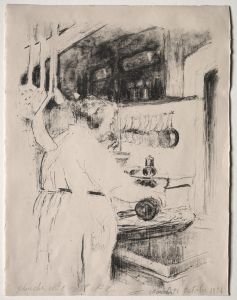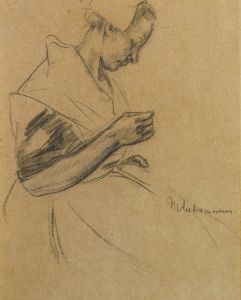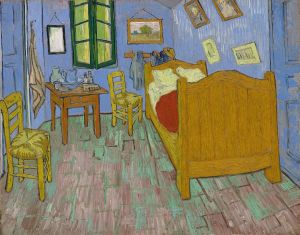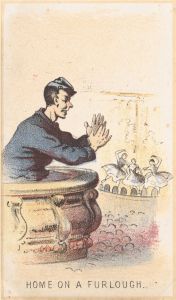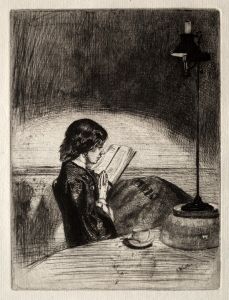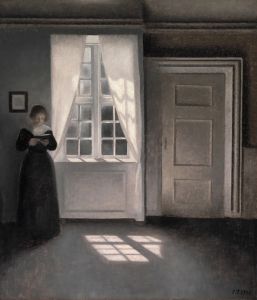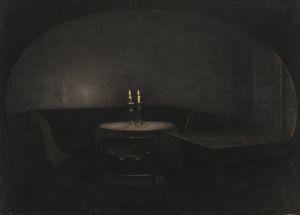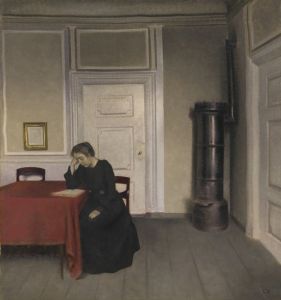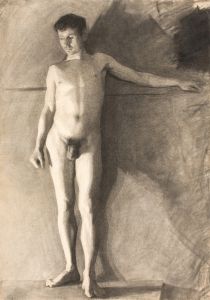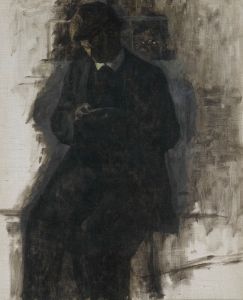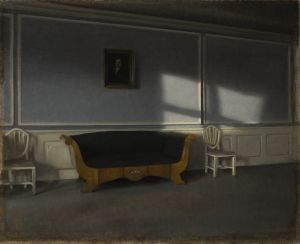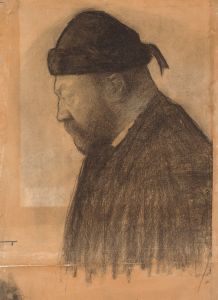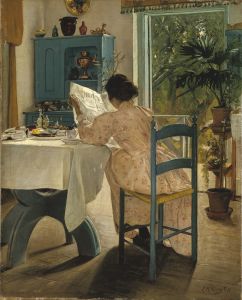
Dagligstuen på Frederiksberg Allé
A hand-painted replica of Vilhelm Hammershøi’s masterpiece Dagligstuen på Frederiksberg Allé, meticulously crafted by professional artists to capture the true essence of the original. Each piece is created with museum-quality canvas and rare mineral pigments, carefully painted by experienced artists with delicate brushstrokes and rich, layered colors to perfectly recreate the texture of the original artwork. Unlike machine-printed reproductions, this hand-painted version brings the painting to life, infused with the artist’s emotions and skill in every stroke. Whether for personal collection or home decoration, it instantly elevates the artistic atmosphere of any space.
Vilhelm Hammershøi (1864–1916) was a Danish painter known for his poetic and subdued interior scenes, often featuring muted color palettes and a sense of quiet introspection. One of his works, Dagligstuen på Frederiksberg Allé (translated as The Living Room on Frederiksberg Allé), exemplifies his characteristic style and thematic focus.
This painting depicts an interior space, likely a room in a home on Frederiksberg Allé, a prominent street in Copenhagen, Denmark. The composition is marked by its simplicity and restraint, with an emphasis on light, shadow, and the interplay of geometric forms. Hammershøi often painted rooms with sparse furnishings, and this work is no exception. The scene is devoid of human figures, a common feature in many of his interiors, which enhances the sense of stillness and introspection.
The muted tones of the painting, dominated by shades of gray, white, and soft earth colors, create a subdued atmosphere. Hammershøi was known for his ability to capture the subtle nuances of light filtering through windows, and this work reflects his mastery in rendering natural light. The careful attention to detail in the textures of walls, furniture, and other elements contributes to the overall sense of realism while maintaining an air of mystery.
Hammershøi's interiors often evoke a sense of timelessness and universality, and Dagligstuen på Frederiksberg Allé is no exception. The lack of overt narrative or specific historical references allows viewers to focus on the formal qualities of the painting and the emotions it elicits. This approach aligns with Hammershøi's broader artistic philosophy, which prioritized mood and atmosphere over explicit storytelling.
The exact date of the painting is not specified, but it likely falls within Hammershøi's mature period, during which he produced many of his most celebrated works. Frederiksberg Allé, the location referenced in the title, was a fashionable and affluent area in Copenhagen, known for its tree-lined streets and elegant residences. It is possible that the room depicted in the painting was part of Hammershøi's own living environment or that of someone in his social circle, as he often painted spaces familiar to him.
Today, Vilhelm Hammershøi is regarded as one of Denmark's most significant artists, and his works are celebrated for their unique ability to convey a sense of quiet beauty and introspection. Dagligstuen på Frederiksberg Allé is an excellent example of his mastery of interior scenes and his enduring appeal to audiences worldwide.





